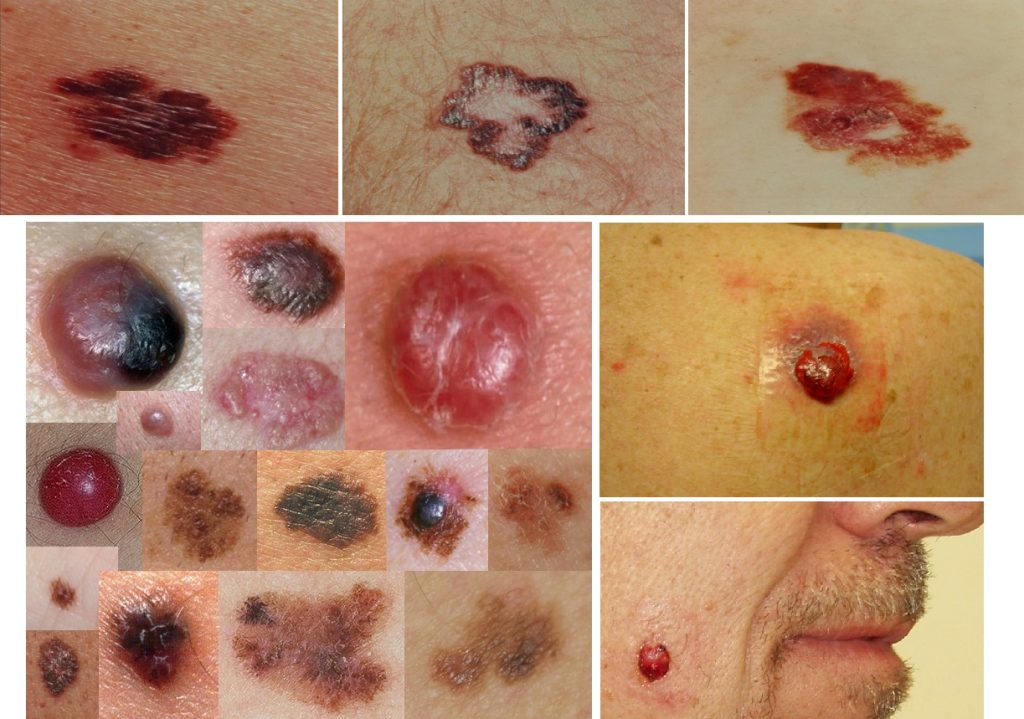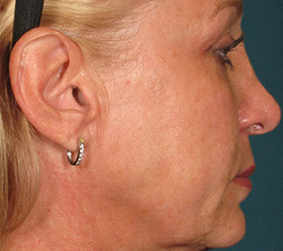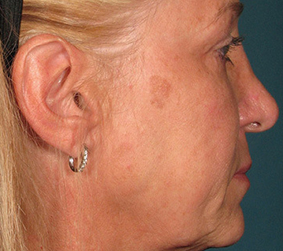What is Skin Cancer?
What is Skin Cancer?
In general, skin cancer is the uncontrolled growth of abnormal skin cells. It occurs when DNA damage to cells (most often caused by UV radiation from sunshine or tanning beds) triggers mutations that cause the skin cells to multiply rapidly and form tumors. One in 5 Americans will develop some type of skin cancer over the course of their lifetimes. The skin is the body’s largest organ, and skin cancer is the most common type of cancer. You can get skin cancer anywhere on your body, but the risk is greatest in areas that are exposed to sunlight often, such as your face, scalp, neck, hands, and arms. With early detection and treatment, however, most skin cancers are completely curable.
Why treat skin cancer?
Early detection and treatment of any skin cancer is essential to prevent the disease from enlarging and being locally destructive or spreading to other areas of the body.
What are the most common types of skin cancer?
There are many different kinds of skin cancers, with each type distinguished by the types of cells that have “gone haywire” or mutated. While certain people may be predisposed to all the different types of skin cancers due to their personal genetics or history of sun exposure, these skin cancers DO NOT turn into each other. The three most common forms of skin cancer are:
- Basal Cell Carcinoma (BCC)
The most common skin cancer and the most common human cancer overall, BCC develops in the “basal cells” that make up the deepest layer of the epidermis (the epidermis is the top layer of the skin). BCC may be a shiny, pink, white, translucent, bump, a sore that does not heal, a reddish patch, or a waxy scar like area. It is usually locally destructive and can be disfiguring if left untreated. However, it very rarely metastasizes or is life threatening. Early diagnosis can prevent damage to surrounding tissue.

- Squamous Cell Carcinoma (SCC)
This cancer begins in the squamous cells which are also found in the upper layer of the skin (the epidermis). SCC may appear as a crusted or scaly area of the skin, a non-healing ulcer, or a rapidly growing bump or ‘horn’. SCC usually appears on areas frequently exposed to sun, but can occur anywhere (even in genital areas that typically do not get sun). SCC requires early detection as it can metastasize and be life threatening.

- Melanoma
This cancer begins in the melanocytes which are the cells that provide pigment or color to skin. Melanoma is one of the deadliest forms of skin cancer because it can spread rapidly inside the body. Approximately one American dies every hour from melanoma. With early detection and treatment, most melanomas are easily cured with outpatient surgical procedures. However, once melanoma reaches a certain depth or spreads inside the body, the cure rates are much less.

Melanoma does NOT have to be dark brown or black!! Amelanotic Melanoma (pink melanomas or melanomas without pigment do exist and are just as deadly)
How is Skin Cancer Diagnosed?
Skin cancer often looks like a mole with an irregular shape or color, and its appearance and size can change over time. However, it may instead look like a pink “pimple” that never goes away or a scaly patch of dry skin. It may also be itchy, painful, bleed easily, or have no symptoms at all. Because skin cancer can be ‘sneaky’ and can be in places that are hard to see for yourself (such as behind your ears or in your scalp), it is important to see a dermatologist at least once a year. Contact Us at South Coast Dermatology for your Appointment
If your Doctor finds a mole or growth on your skin that looks suspicious, then he or she will perform a biopsy. There are 4 main types of biopsies:
- Shave biopsy: The abnormal looking growth is shaved off with a sterile razor blade and will heal like a scrape for 1-2 weeks
- Punch biopsy: An instrument called a ‘punch tool’ that looks like a small cookie cutter, removes a circle of tissue for testing and the wound is closed with a couple stitches
- Incisional biopsy: Part of the growth is removed with a scalpel
- Excisional biopsy: The entire growth is removed with a scalpel
How is Skin Cancer Treated?
Your Doctor will tailor your treatment plan depending on your personal biopsy results. Not all methods are appropriate for certain atypical moles or cancers (depending on type, size, depth, etc). Our Doctors, Physician Assistants, and Nurse Practitioners, are trained in the best and latest techniques and will select the best treatment for you. Contact Us for an Appointment and Professional Consultation.
- Mohs Surgery: Sequential surgical “layer by layer” removal of the skin cancer and intraoperative margin evaluation for most precise, tissue sparing, surgery. Mohs Skin Cancer Surgery
- Traditional Excision: Surgical removal of the tumor and a portion of the healthy surrounding tissue to prevent recurrence and ensure complete removal.
- Cryosurgery: Destruction of the tumor by freezing with liquid nitrogen.
- Curettage and Desiccation: Removal of the skin cancer by scraping and cauterizing.
- Topical Prescription Medications AKA “Chemo Creams”: Treatment by application of a cream containing prescription medications that kill or help your immune system kill atypical cells.
- Photodynamic Therapy: Light treatment wherein a special photosensitizing medication is applied topically and then light is used to activate the medication to kill precancerous cells.
What Can I do to prevent Skin Cancer?
- Reduce sun exposure: Avoid the sun if possible between 10 AM and 2 PM
- Wear Sun Protective Clothing such as sunglasses, WIDE brimmed hats, and long sleeves.
- Wear a broad spectrum Sunscreen (that covers UVA and UVB) with Sun Protection Factor (SPF) at least 30. Do this EVERY day. You can receive a great deal of UV radiation through clouds, under shady trees, through a car windshield, and during the winter •Reapply that sunscreen every 2 hours if out in the sun!
- Don’t forget your lips! Use a lip balm with SPF.
- Avoid exposure to tanning beds
- Recognize the ABCDEs of moles and melanoma
- Asymmetry
- Border Irregularity
- Color variability
- Diameter
- Evolving or changing
Understand that not all ‘bad moles’ or melanomas have ABCDE warning signs so….
Get a skin check and have any new or changing skin lesion examined by a dermatologist.
Contact Us at South Coast Dermatology to Schedule your Appointment.
Contact South Coast Dermatology online or call 781.335.9700 for more information.






















